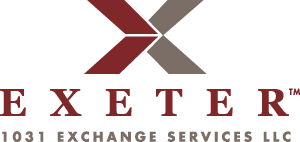IRS Form 8824 Guidance with a Reverse 1031 Exchange
The first thing you need to do throw out the term reverse 1031 exchange. It is really not a reverse 1031 exchange. A true reverse 1031 exchange would mean that you could acquire and receive title to like-kind replacement property and then subsequently sell and convey title to the relinquished property. This tax-deferred exchange structure simply does not exist.
You can learn more about reverse tax-deferred exchanges by reading our web page entitled "Introduction to Reverse 1031 Exchanges."
Revenue Procedure 2000-37
What we do have is Revenue Procedure 2000-37 that allows you to structure a tax-deferred exchange by acquiring your like-kind replacement property first and subsequently disposing of your relinquished property by utilizing a parking arrangement.
The best way to visualize a "reverse 1031 exchange" is to look at the over all transactional structure in two component parts instead of one "reverse 1031 exchange" transaction. You have a parking arrangement and a simultaneous tax-deferred exchange.
Parking Arrangement
The first component is a parking arrangement where the taxpayer arranges for the Exchange Accommodation Titleholder ("EAT") to acquire title to one of the taxpayer's properties; either the relinquished property or the like-kind replacement property.
Simultaneous 1031 Exchange
The second component is a simultaneous or concurrent 1031 exchange, which is either completed in the beginning (exchange first) or at the end (exchange last) of the over all "reverse 1031 exchange" transactional structure.
Exchange Last
The exchange last structure is the preferred structure whereby the EAT acquires and parks title to the like-kind replacement property. The like-kind replacement property is ultimately conveyed to the taxpayer simultaneously when the relinquished property is sold and conveyed to the buyers at the back-end of the over all transaction.
Exchange First
The exchange first structure is where the simultaneous 1031 exchange occurs first or upfront so that the taxpayer acquires and receives title to the like-kind replacement property and simultaneously conveys title to the relinquished property to the EAT.
IRS Form 8824 Reporting
Therefore, since we have a simultaneous 1031 exchange, the dates to be used on Form 8824 would be the dates corresponding to the simultaneous exchange. In an exchange last, the date the taxpayer conveys the relinquished property to the buyer and the EAT conveys the like-kind replacement property to the taxpayer would be used. In an exchange first, the date the taxpayer conveys the relinquished property to the EAT and the Seller conveys title to the like-kind replacement property to the taxpayer would be used.
